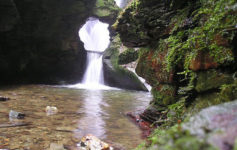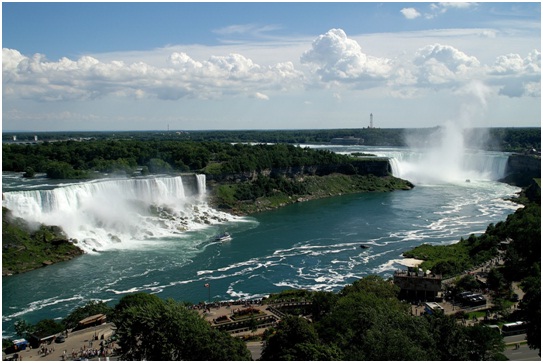Armenia is a country that places a big stress on religious tourism. You can basically find a Christian church wherever you go, in cities, villages, and even uninhabited mountains (and there are so many of them there). But pagan temples, which are a part of histories of ancient countries, are rare even here.
Garni is the last of pagan temples that once adorned the religious landscape of Armenia. It was built by the Armenian King Trdates I in the first century AD. The financial resources were a gift from the Roman Emperor Nero. The temple was built in Hellenistic style (quite popular for the mentioned period) and was dedicated to Mihr or Mitha (the Persian version).
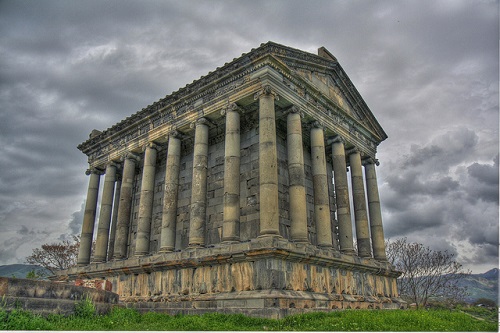
The temple had and still has gigantic stairs, a feature that can be found in some Armenian churches like the ruins of Zvartnots Cathedral. The aim of such stairs is to make the visitor bend over when visiting the sacred site, as if bowing before the gods or God.
After 301 AD, when the country accepted Christianity as a state religion and became the first country in the world to do so, all pagan temples were destroyed and Christian churches built instead.
As walls and columns came down all over country, Garni was saved by the king’s sister, who turned the temple into a summer residence. The Christian church was built right next to it.
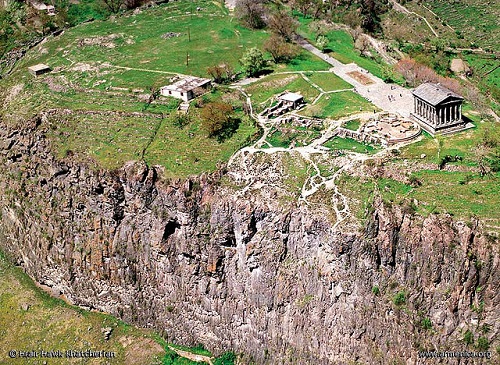
The Garni complex is perhaps the most visited historic site in the country. And it’s visited both by locals and travelers. It stands on the edge of the Azat River Gorge. The temple becomes magical during the sunsets, when the sun rays burn the columns and the walls of Garni with bloody colors. For a second, it seems the god of sun has returned and taken over its possession. That’s when you understand why exactly the ancient Armenians chose this site for the construction. So, make sure to have a ride home, as staying till sunset is a must!
The complex contains three main structures. The pagan temple is the first and best preserved one. The ruins of the Christian church are the second structure. The third one is the royal bath, which had exceptional hot and cold water system and a beautiful mosaic wall that is now located in the Museum of History in Yerevan. The museum also contains some of the interior details and a miniature replica of the temple.
Right next to the opening gates is a small market that sells local sweets, wolf fur, and other souvenirs. Make sure to buy soujoukh and sour lavash; both of them will give you new taste impressions.
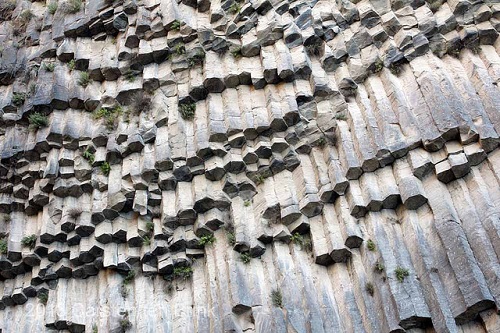
If you’re physically fit, you can also walk down the gorge to the incredible rock formations called the Symphony of Stones. The rock is one of the most photographed places in Garni. You can also try fish from the river in the nearby restaurant. Coming up to the complex is twice as difficult, so you might want to hire a taxi for a shorter trip back up.
The temple itself is a not entirely too ancient, as the original was destroyed by an earthquake in 1679. The building was completely in ruins, which lat forgotten until 1969, when the temple was reconstructed. As you view the temple, you’ll notice that some of the stones bear inscriptions and breathe ancient, while others are quite new. This is what keeps the temple alive and it’s a unique relic from the Armenian paganism that is extremely dear to the heart of the locals.

